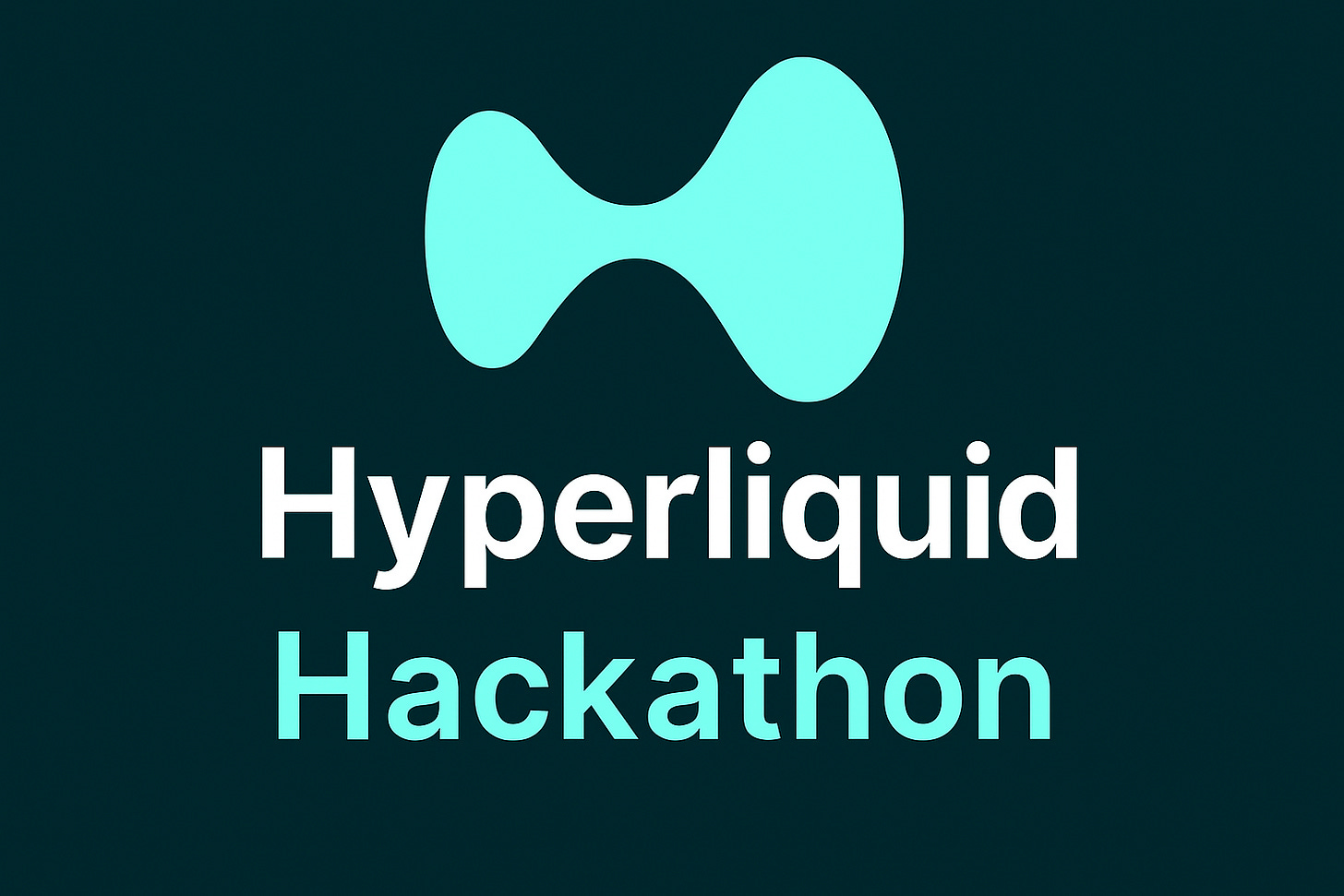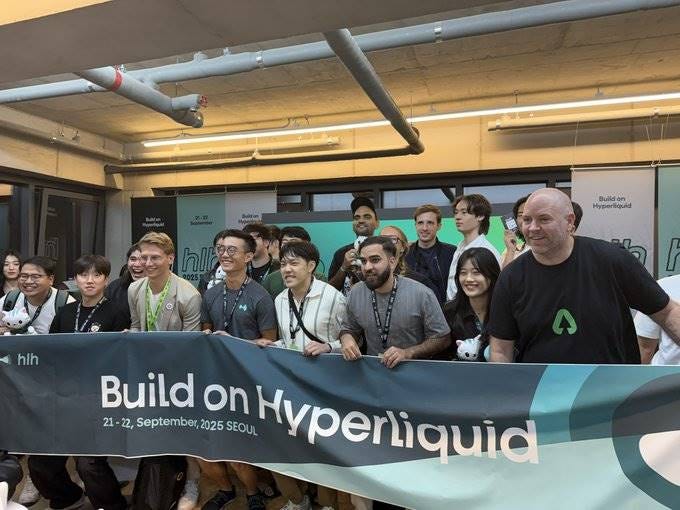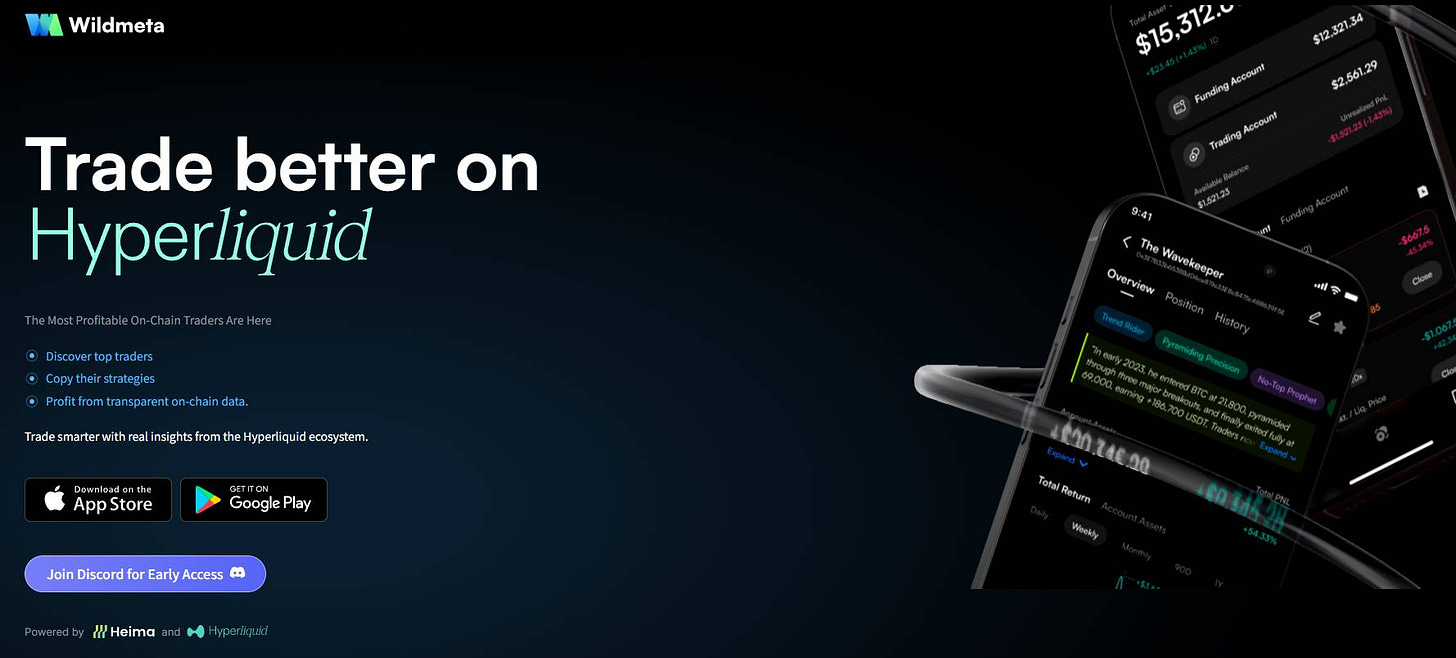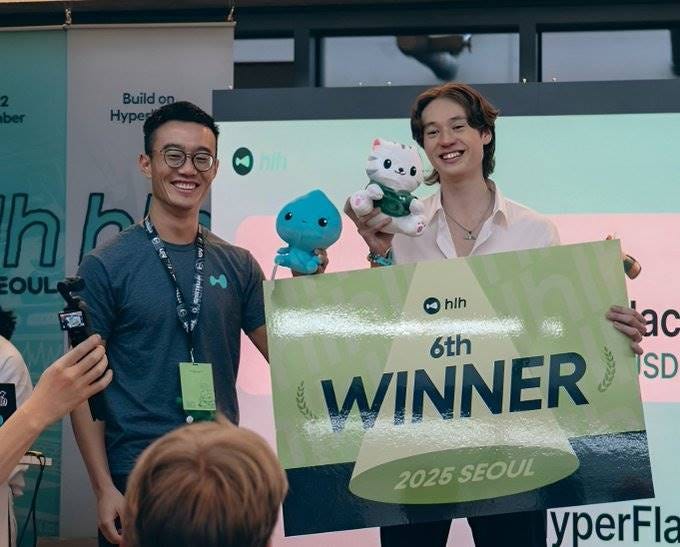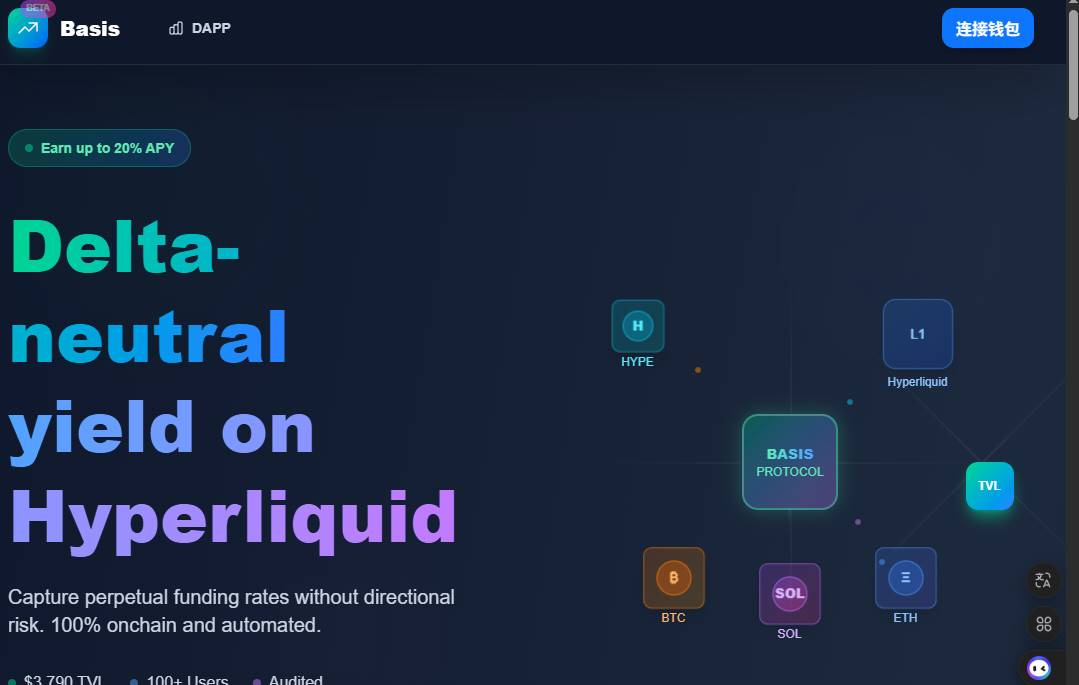Hyperliquid Korea Hackathon Wrap-Up: A Quick Look at 13 Winning Projects
Author | TechFlow
Compiled by WuBlockchain
Source: https://www.techflowpost.com/article/detail_28309.html
On September 21–22, 2025, alongside Korea Blockchain Week (KBW) in Seoul, Hyperliquid hosted its first-ever offline hackathon.
This 48-hour developer marathon attracted builders from around the world and ultimately selected 13 winning projects, with a total prize pool exceeding $50,000.
As competition intensifies and user expectations grow, Hyperliquid needs a richer application layer to consolidate its ecological position. This hackathon marks its shift from being purely a trading platform to evolving into a complete ecosystem. Among the standout projects, some may become future dark horses of the Hyperliquid ecosystem—and also bring new opportunities.
Image source: X user @reason8eth
From AI trading assistants to cross-chain infrastructure, from risk management tools to social trading platforms, let’s take a quick look at the most notable entries.
First Place: Hyperliquid Copilot
Project Positioning: An AI-based professional trading assistant that provides Hyperliquid users with institutional-grade trading execution capabilities.
The project was developed by the Wildmeta team, founded by Kevin Chen (@c_kevin75). Interestingly, on the very day of the hackathon, Kevin was liquidated for $2 million on Hyperliquid—and that same evening, he won first place with this project. In his acceptance speech, he said he wanted to “write the trading lessons into Wildmeta’s product.”
Wildmeta itself is a broader Hyperliquid trading platform offering trader discovery, notification systems, chain abstraction, and HyperCore/HyperEVM account management. At the hackathon, the showcased Copilot feature focused on AI-driven trading insights, including:
● Real-time signal generation
● Automated order execution
● Quantitative analysis
The tool integrates seamlessly with HyperCore, leveraging on-chain data and market patterns for AI analysis to improve trader efficiency. A special emphasis was placed on risk management—likely shaped by the founder’s own trading experience.
Current Status: The Wildmeta app is already live, available on iOS and Android, and compatible with the Hyperliquid desktop application—no additional wallet setup required.
Why It Matters: This is a mature project with an existing user base, and the founder’s personal trading lessons have given the product genuine user-driven insights.
Second Place: Edgescan (@edgescan)
Project Positioning: A smart contract security scanner designed specifically for Hyperliquid and HyperEVM.
Edgescan is a cybersecurity company with over 10 years of operations, specializing in vulnerability scanning and penetration testing. The company has handled more than 40,000 security assessments, building deep expertise in traditional web security.
For the Hyperliquid ecosystem, the project provides continuous security monitoring services, capable of detecting various smart contract vulnerabilities, including SQL injection, API exposure, and other critical risks. The system supports HyperEVM contract scanning, identifying malicious assets and shadow IT risks.
Edgescan adopts a hybrid model of automation + human verification, claiming 100% accuracy with effective elimination of false positives. It integrates the EUVD (European Union Vulnerability Database) for compliance, and can scan over 768 actively exploited CVEs.
Current Status: The core platform is already mature and operational; during the hackathon, the team built a dedicated scanning feature for Hyperliquid.
Data Performance: Over 40,000 past assessments completed, with a strong track record in security.
Why It Matters: As Hyperliquid’s ecosystem grows rapidly, security demand will surge. Edgescan’s experienced team and technical foundation give it strong potential in this niche market.
Third Place: HODL Bot (@hlbot_hl)
Project Positioning: A Telegram-based group trading bot focused on long-term holding and risk management strategies.
The team remains relatively low-profile, but the product design shows a deep understanding of community-driven trading and risk management.
The core of HODL Bot is simplifying complex risk management strategies into easy-to-use Telegram group operations. Users can set automated long-term holding strategies, and the system performs automatic rebalancing. Importantly, it also supports delta-neutral hedging, protecting asset value during market volatility.
The project integrates directly with the Hyperliquid API, supporting 100+ perpetual with up to 50x leverage. All operations are conducted through the Telegram interface, and users maintain full wallet control without custodial risk.
Current Status: Running as a Telegram bot in early stages. The team plans to develop a native application.
Why It Matters: Social trading is a key DeFi trend. HODL Bot’s innovation in group collaboration and risk management is noteworthy.
4th Place: Hyper Homo
Project Positioning: A native social copy-trading platform for Hyperliquid.
The team leans heavily on meme culture and community-driven branding; specific background details are limited.
The platform allows users to mirror top traders’ perpetual and spot positions in real-time, with customizable position sizing and stop-loss settings. Through community voting, users can select signals and strategies to follow, creating a decentralized investment decision mechanism.
It leverages Hyperliquid’s on-chain order book to deliver transparent, low-slippage copy trading. Unlike many competitors, users can view the full on-chain trade history.
Current Status: Still at the prototype stage with no usable front-end yet.
Why It Matters: The copy-trading market is huge. If the team can secure a first-mover advantage within the Hyperliquid ecosystem, growth prospects are significant.
5th Place: STIBS
Project Positioning: A yield-smoothing tool for Hyperliquid, focusing on reducing drawdown risks in DeFi strategies.
Team details are sparse, but public info shows that STIBS aggregates and averages returns from different strategies to reduce volatility of individual strategies. The system dynamically allocates between perpetuals, spot, and HLP liquidity mining, and automatically hedges when funding rates are abnormal.
Its innovation lies in creating smoother yields via pooled mechanisms—users enjoy relatively stable APY without suffering from sharp fluctuations of a single strategy.
Current Status: Early prototype stage; not yet deployed.
Why It Matters: Yield smoothing is critical for institutional investors. If the product matures, it could attract large amounts of capital seeking stable returns.
6th Place: HyperFlash
Project Positioning: A cross-chain arbitrage engine specializing in sub-second execution with zero capital lock-up. Github
This project was developed entirely by a 19-year-old prodigy, creating a stir during the hackathon. Despite his age, the technical execution impressed the judges.
Developer’s social handle: @AndreiDeSte.
HyperFlash addresses the inefficiency of traditional cross-chain arbitrage, which requires pre-funded assets across multiple chains. By leveraging innovative asynchronous bridging technology, HyperFlash executes arbitrage without locking capital.
The system can perform cross-chain arbitrage in milliseconds, a qualitative leap over the several minutes typical of DEXs. Most importantly, the process requires no pre-deposited TVL, greatly improving capital efficiency.
Current Status: Prototype demo completed; technical feasibility proven, but commercialization will take time.
Why It Matters: Cross-chain arbitrage is a major DeFi demand. If this approach matures, market potential is enormous. The young developer’s innovative mindset is also worth watching.
7th Place: Tetrics (@tetrics_io)
Project Positioning: A portfolio analysis and risk-scoring tool.
The team focuses on DeFi risk management and collaborates with the Anoma ecosystem, showing expertise in privacy-preserving technologies and cross-chain infrastructure.
Tetrics provides Hyperliquid users with comprehensive portfolio analysis, including risk scores, asset allocation recommendations, and potential loss warnings. The system can monitor portfolio risk in real time and offer optimization suggestions.
It combines traditional financial risk management models with DeFi-specific needs, supporting risk calculations for perpetuals, spot, and liquidity mining assets.
Current Status: Early development stage; basic framework exists, but functionality is still incomplete.
Why It Matters: As DeFi user assets grow in size, demand for professional risk management tools will only increase.
8th Place: BASIS X (@BasisFi)
Project Positioning: An on-chain pool for delta-neutral basis trading.
The team has a quantitative trading background with deep knowledge of basis strategies.
BASIS X generates stable basis returns by simultaneously holding opposite positions in spot and perpetuals. Users can deposit funds into the pool and earn delta-neutral yield.
The project implements a fully on-chain basis trading strategy with high transparency—users can monitor performance in real time.
Current Status: A test version is live, with a current TVL of $3,790. It is one of the few projects already managing real funds.
Data Performance: While TVL remains small, the project has moved beyond concept to actual operation, showing end-to-end delivery capability.
Why It Matters: Delta-neutral strategies are a favorite among institutional investors, offering stable and predictable demand.
9th Place: HyperSonia
Project Positioning: An AI trading coach that provides personalized guidance.
Team details are limited, but the product design indicates familiarity with AI technology and trading education.
HyperSonia integrates semantic search with predictive alerts, offering users tailored trading advice and market insights. It analyzes users’ trading histories and delivers improvement recommendations.
Current Status: Prototype stage; no standalone website or product interface yet.
Why It Matters: Trading education is a huge market, and AI-driven personalized coaching has the potential to transform how people learn.
10th Place: AlgoGene
Project Positioning: A trading strategy generator powered by genetic algorithms.
Details are sparse, but the idea is to use evolutionary algorithms to automatically generate and optimize trading strategies. By simulating biological evolution, the system iteratively improves strategy parameters to discover optimal models.
In theory, applying evolutionary biology concepts to strategy design could uncover complex combinations that are difficult for humans to design manually.
Current Status: Early development stage; algorithmic framework design completed.
Special Awards
Spread – RedStone Special Prize
Positioning: An NBBO (National Best Bid and Offer) router to secure the best trade execution price.
Spread compares prices across multiple DEXs and automatically routes users’ trades to the best venue, reducing slippage and costs.
Current Status: MVP version completed; winner of the RedStone Partner Prize.
HyperPlug – deBridge Track 1st Place
Positioning: A multi-chain wallet interaction module simplifying cross-chain operations.
It provides developers with an easy-to-integrate toolkit for cross-chain interaction, lowering technical barriers for DApp building.
Current Status: Developer toolkit available.
Hyper Metal (Prototype Stage)
Positioning: A DeFi risk detector that discovers vulnerabilities through on-chain simulations.
It recreates attack scenarios in realistic environments to help protocols identify hidden risks. Currently in proof-of-concept stage, focusing on security tooling.


